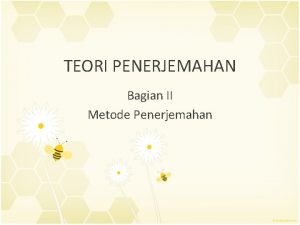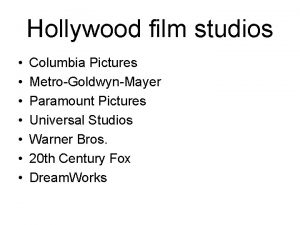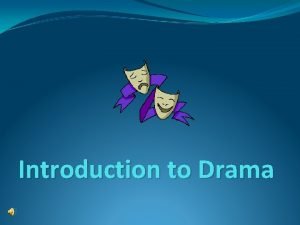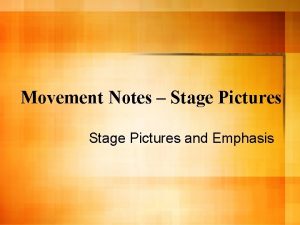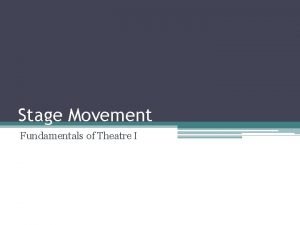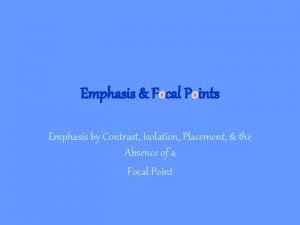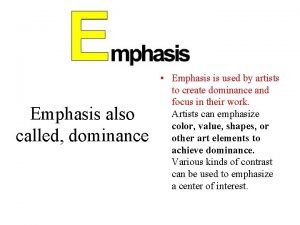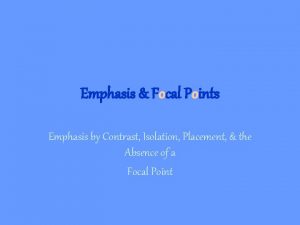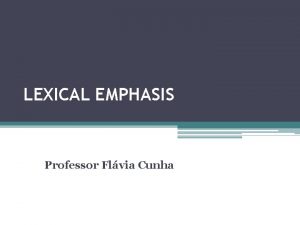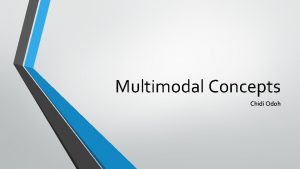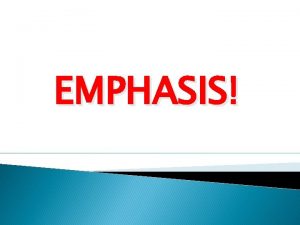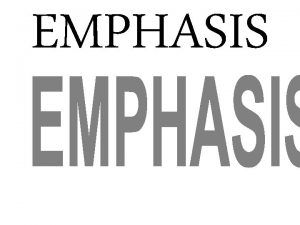Movement Notes Stage Pictures and Emphasis Movement and
















- Slides: 16

Movement Notes – Stage Pictures and Emphasis

Movement and Stage Pictures l Besides being meaningful, movement should also be functional. The audience must be allowed to see and hear the important items. l It is crucial to create focal points that catch and hold the audiences’ attention.

Stage Pictures and Tableaus Stage Picture l Every moment of a play or scene generates a still image. – If at any moment the actors are to freeze the stage picture should be interesting to the eye. Tableau l Motionless figures representing a scene from a story or part of story. – A still image on stage. Often used at the opening or closing of a scene.

Emphasis l Emphasis is used by the director to give focus to the performer or area of the stage the audience should be looking at. l There are several types and ways this can be done: Stage Pictures (or composition) – Levels – Planes –

Stage Pictures - Composition l Composition is the way the actors are grouped on the stage in an appealing and meaningful arrangement; it is the picture the audience sees onstage.

Direct Emphasis The focus of the stage picture is on 1 actor

Duoemphasis l The focus of the stage picture is on two different actors of equal importance.

Secondary Emphasis Focus is divided between a group and a main character

Diversified Emphasis Used when there is a Frequent change in the focus (usually between 5 or more characters)

Levels • The actual head height of the actor determined by his or her body position -sitting, lying, standing, or elevated by an artificial means such as a step unit or platform • Meaning is created in stage pictures by placing actors at different levels

Levels The higher/taller the actor, the more emphasis

Planes l Imaginary divisions giving depth to the proscenium stage; – an actor moves through the stage planes as he or she moves downstage toward the audience or upstage away from the audience

Planes The depth of an actor onstage (how close an actor is to the audience)

Diagonals Compositions where the actors are not on the same plane. - Often used to create a feeling of tension -

Triangles Used where 3 or more actors of equal focus are onstage

Emphasis l Directors often times use WHERE the actor is on stage (location) in order to place emphasis.
 Sl emphasis tl emphasis
Sl emphasis tl emphasis Universal pictures columbia pictures
Universal pictures columbia pictures Paramount pictures columbia pictures
Paramount pictures columbia pictures Disadvantages of two stage tendering
Disadvantages of two stage tendering House left vs stage left
House left vs stage left Phase one denial
Phase one denial Stage right vs stage left
Stage right vs stage left Proscenium stage positions
Proscenium stage positions What is drama
What is drama Movement and stage picture are known as
Movement and stage picture are known as Wisc
Wisc Stage body positions worksheet
Stage body positions worksheet A stage picture held without movement
A stage picture held without movement Movement and non movement area
Movement and non movement area Focal point placement
Focal point placement Emphasis by placement in art
Emphasis by placement in art Balance
Balance
